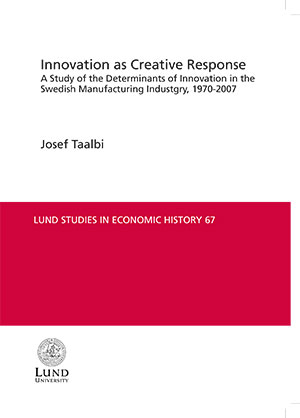This doctoral thesis examines the driving forces of product innovations in the Swedish
manufacturing industry during the period 1970-2007. Specifically it examines whether
and to what extent innovations have been the creative response to positive factors,
such as new opportunities and obstacles related to their exploitation, and negative
factors, such as economic, environmental and organizational problems. To this end, a
newly constructed database, SWINNO, containing more than 4000 innovations is explored.
Using this database, the thesis studies the determinants of innovation activity
in firms, industries, in development blocks and on the macro-level. The results point
to the existence of two main patterns. Innovations aimed to solve economic, environmental
and organizational problems have culminated during the 1970s, reflecting
the deep economic, social and environmental character of the structural crisis. Some
of these innovations have been parts of development blocks solving obstacles to the
introduction of emission control and renewable energy technologies. Innovations exploiting
opportunities have culminated in the mid-1980s and towards the beginning
of the 2000s. These have formed development blocks surrounding ICT and biotechnology,
evolving by way of the exploitation of opportunities and the solution of technological
imbalances. New technologies have been salient driving forces among entrant
and incumbent ICT firms, but evidence was also found for a role played by decreases
in profitability in inducing search for new products.

